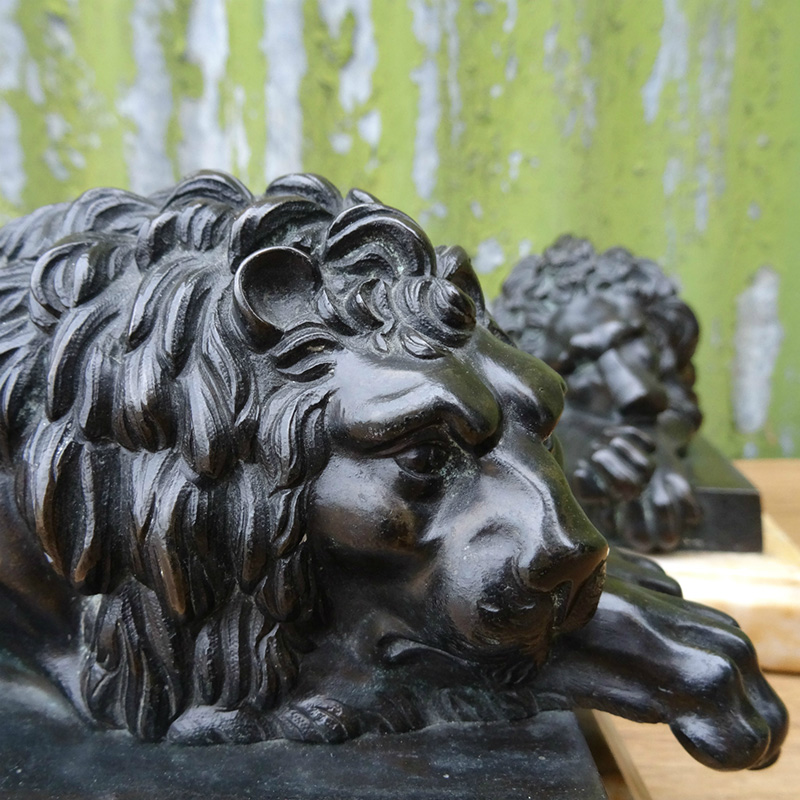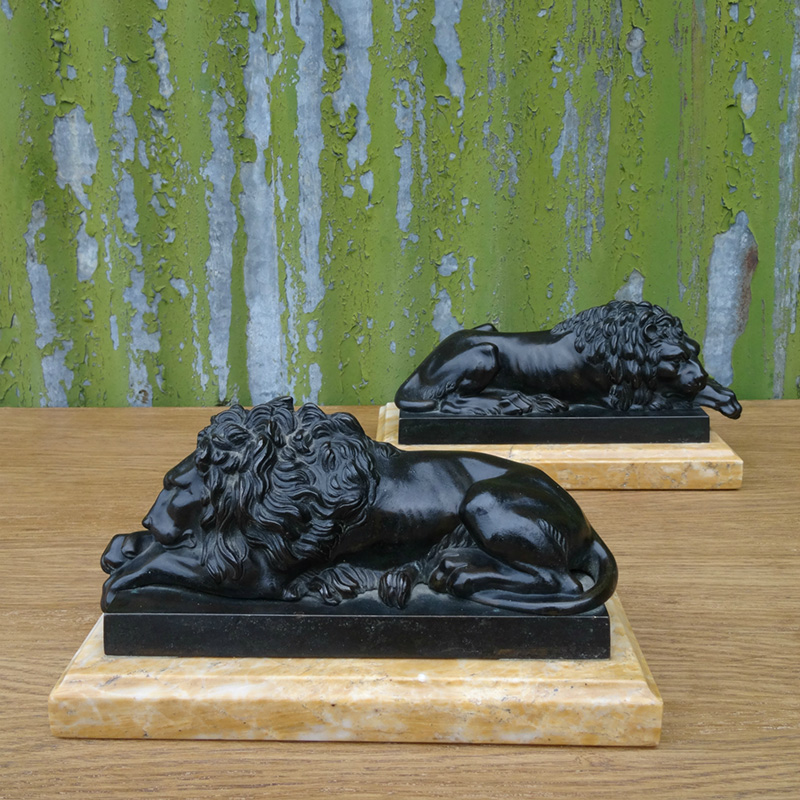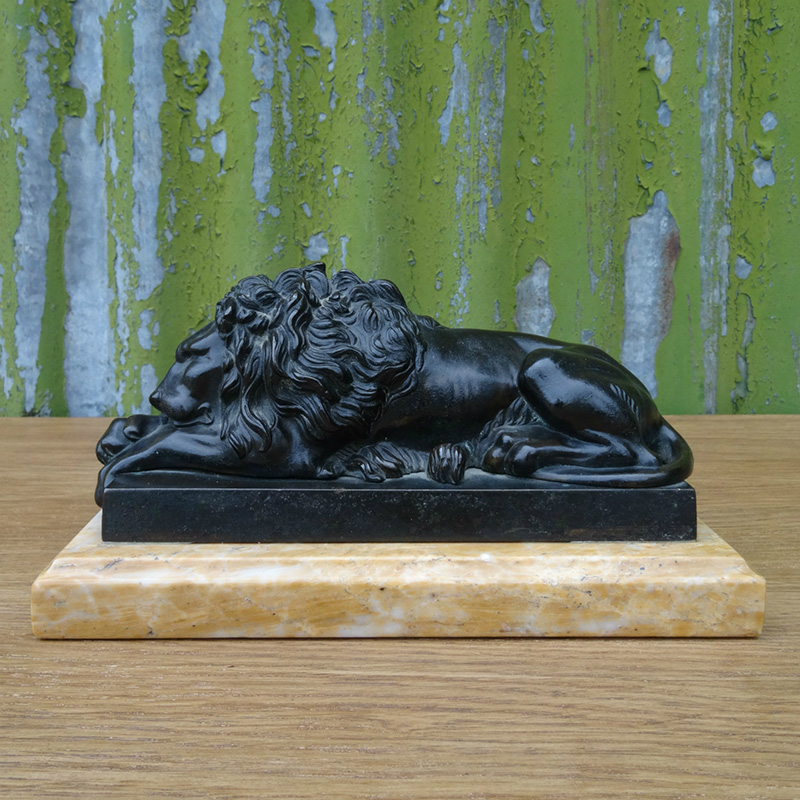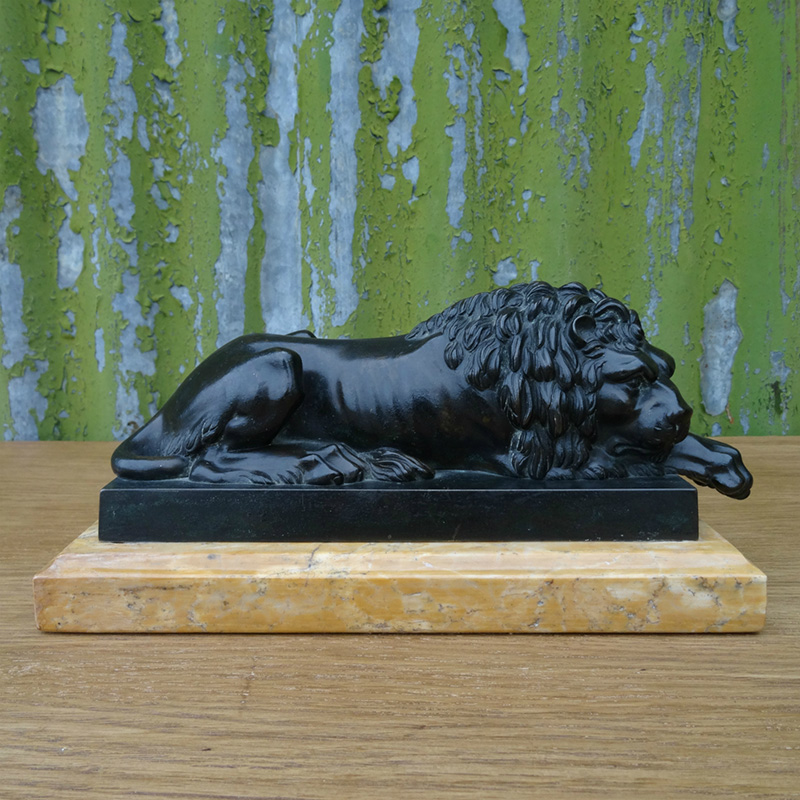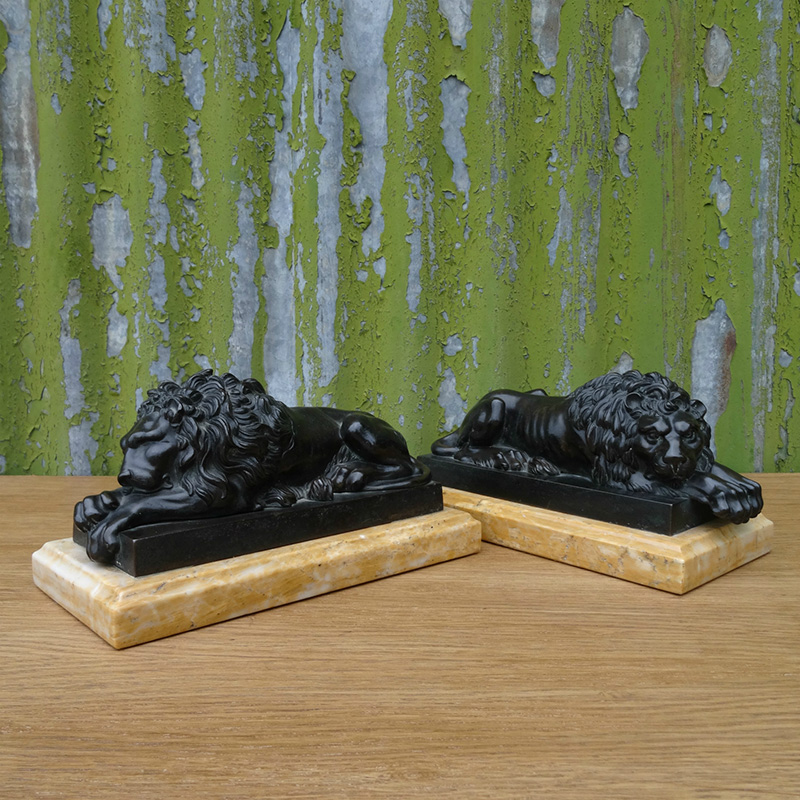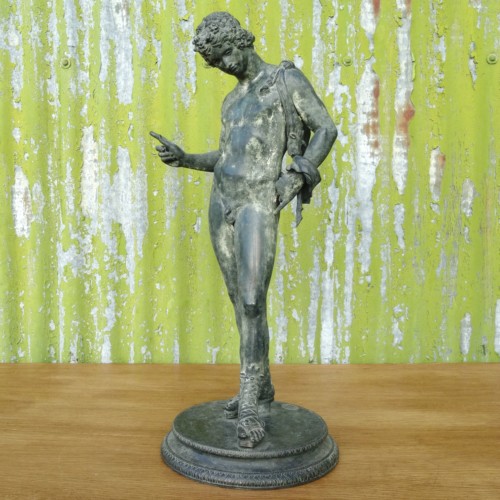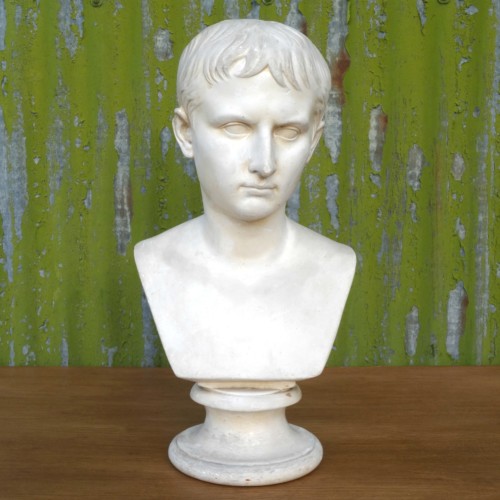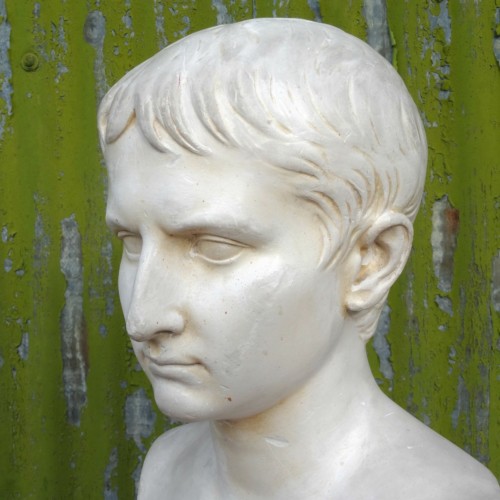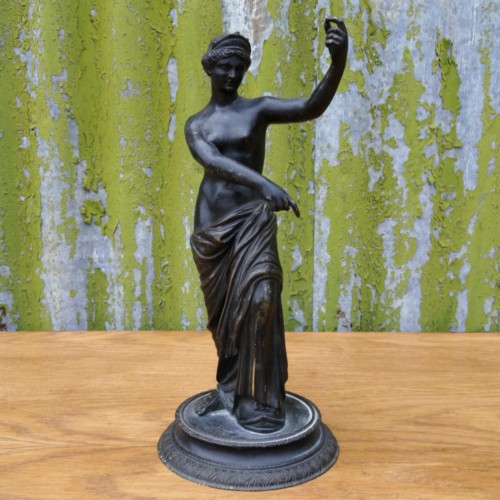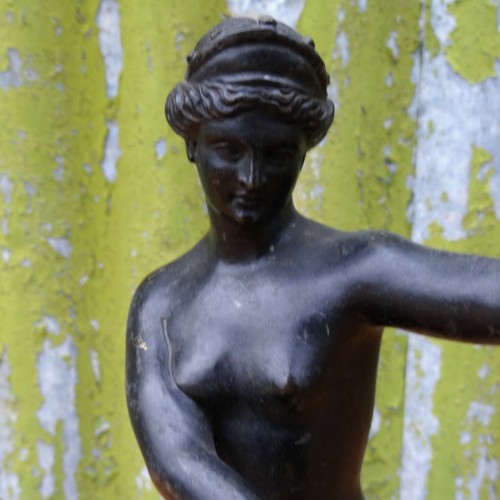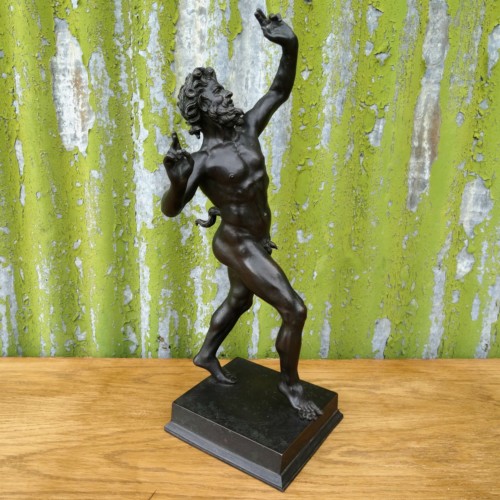A pair of early 19th century Italian patinated bronze lions after Antonio Canova, circa 1820, on Alabastro Fiorito plinths.
Pair of Canova Lions
Dimensions: 11.5cm high, 25cm and 23cm wide, 12cm deep
Footnote
Antonio Canova (1757-1822) was the greatest Italian neoclassical sculptor, and sculpted the marble lions for the monumental tomb of Pope Clement XIII in St. Peter’s, Rome from 1783 to 1792. They proved to be a popular image, copies were made soon after in the workshops of Rome to sell to wealthy ‘Grand Tourists’ as souvenirs from their classical tour. One lion is depicted sleeping, whilst the other is vigilant, said to represent the Pope’s moderation and vigilance. In England, Canova’s greatest patron was the 6th Duke of Devonshire whose seat was at Chatsworth House, Derbyshire.
The Grand Tour of the late 17th, 18th and 19th centuries saw many upper class, wealthy and aristocratic gentlemen travel to Italy and Europe, particularly Rome, Venice and Florence, for pleasure, education and inspiration. This afforded them the opportunity to view important classical and Renaissance works of art and architecture.
The term ‘Grand Tour’ was coined by the Catholic priest and travel writer Richard Lassels (circa 1603-68), who used it in his influential guidebook The Voyage of Italy, published in 1670, to describe young lords travelling abroad to learn about art, architecture and antiquity.
Robert Adam wrote of Rome in 1755, ‘Rome is the most glorious place in the universal world. A grandeur and tranquillity reigns in it, everywhere noble and striking remains of antiquity appear in it, which are so many that one who has spent a dozen years in seeing is still surprised with something new…’
Many Grand tourists collected souvenirs in the form of bronze and marble models of sculpture and architecture, and formed collections of Grand Tour objects for their English country houses, most notably Chatsworth House.

